I’ll show you how I plant a bare root tree Bare root trees arrive in a dormant state. That means they’re basically asleep. They’re not growing any branches not growing any leaves They’re waiting until the outside conditions are right to begin growing.
So when you order online, typically from a nursery, and you get a bare root tree, it arrives asleep. So you want to put it into the ground before it wakes up. Here in Colorado, the first day of spring was yesterday and this is actually a pretty good time of year to put bare root trees in the ground.
Today, it’s supposed to get very warm close to record high temperatures, but next week We have a possibility of snow and most of the nights now are getting down below freezing Those are the conditions that bare-root trees thrive in basically because the cold conditions keep them asleep. It keeps them dormant until the nights are warm enough, the days are warm enough and it basically wakes the trees up to begin growing.
Today in this spot, I’m actually going to be putting a superior plum dwarf tree. Most of the trees I have in the garden here are either dwarf or semi dwarf and that has to do with the rootstock that the main scion, the main type of tree is grafted on to. This root stock will produce a small tree.
This dwarf tree might only grow eight feet tall which is actually perfect for this condition of the garden This is the south side of this large bed and even when it grows tall it won’t be shading some of the taller trees, the semi dwarf trees I have on the north side of this large bed. When I look at my dormant bare-root tree, I’m looking at the roots before I put it into the ground.
I want to make sure that I don’t have a lot of broken roots, that I don’t have any type of damage, any type of mildew or anything else that I can see that might hinder the future growth of the tree. If I notice excessive damage or if it started to rot, before they sent it to me or even during shipment, I won’t plant this tree.
I’ll let the the nursery that I bought from know that what they gave me is not suitable. I want a healthy start going in the ground to produce a healthy tree. I will look just to see if there’s any buds. There’s actually one bud right here that’s just starting to leaf out, so it’s possible I may need to put a little cover around the tree if we get an excessively cold snap coming up, but there’s nothing like that in the forecast.
There’s some good root development here, and so this tree’s okay to go in the ground. You’ll notice this bucket And I’ve got two other trees that I’ll be planting as well. You want to soak your bare root trees in water for at least an hour before you plant them. You can do multiple hours.
.. You really shouldn’t go longer than overnight, but by putting it in water you’re hydrating the roots. You’re essentially giving it a quick drink before you put it in the ground because the ground may not have the same level of moisture And you don’t want to desiccate the roots or dry them out by putting them into soil that that is too dry.
So this quick boost of water before they go into the ground can really help out. I’ve already raked away the mulch that was in this area. And I’ve got a stake that identifies exactly where I want the tree to be. This is a good idea because in this particular bed I’ve put the trees in very specific locations based on how big they’re going to to grow, how tall they’re going to get, and how wide they’re going to get.
So this is the spot I want for this tree. The mulch is out of the way. I’ll just pull up the stake set it to the side for now and then I begin digging the hole You want the hole to be big enough for all of the roots that are on your bare root tree Some of the trees are smaller some of the trees are bigger so the amount of roots that are around the tree will vary, but the basic hole digging is basically the same.
You’re digging a hole. You want it as deep as the deepest part of the the root ball or the the root section. You don’t need to go any deeper It’s not as critical as a potted tree, but we want to get pretty close I’ll actually make the hole wider around the edges so that as the young roots grow, they’ll be growing into loose soil rather than the more compacted dense soil that is present in the bed.
And when I’ve got the hole dug, I’ll go ahead and Put the tree in place, and then as you’ll see a little later. I’ll be putting the mulch back over this dug hole to help protect the young tree as it’s growing. So once I have the hole dug, I don’t particularly advocate adding any type of manure or compost or even fertilizer pellets at this point I think it’s best for the trees to actually start growing in the conditions that they’re going to be growing Now this bed has been amended over the last couple years so the soil is actually in pretty good shape.
Once the roots start growing, they have good soil all around. If you spend a lot of time amending the hole that you’ve dug, you run into the problem where as the roots begin to grow they’re nice and happy in the soil with the compost and the fertilizer. But once they hit the edge of the hole they now get into a much more barren environment and it’s not as inviting for the roots, so if the soil is not as good all the way around, if you’re putting a tree in an area where the soil is actually pretty bad, but yet, you’ve amended the hole, what happens is the roots want to stay happy they want to stay fed.
So they’ll start circling inside the hole where all the good nutrients are and they may never make it outside the hole into the area that the roots really should be growing. And some of the potential is for the roots to basically never anchor the tree and so in a big windstorm or after maybe some heavy snows It’s possible that the tree can fall because the roots never established.
If you treat the roots with the soil that they’re going to grow in from the very beginning, then they don’t have that tendency to stay inside the hole, because the conditions outside the hole are essentially the same as the conditions inside the hole. Now it will be looser soil inside the hole and and that’s good for the roots to start developing, but as far as nutrients are concerned the entire area is the same.
And I find in some of the research I’ve read actually advocates not amending the the tree hole in any way and you’ll have a healthier tree in the end. So for now I’ll take my tree and I’ve done the inspection of the roots and of the stem, and I’ll place it into the hole. Now, I really want to try to get the level of the tree in the hole pretty close to the same level that it was growing in the nursery.
When you look at your tree you’ll definitely notice where the the tree type was grafted on to the root stock. You don’t want that to be underground because if that happens to be buried You can actually start getting some suckers from the main trunk because that tree is going to want to start growing and you may never win your fight against suckers if this graft is below ground level, so definitely keep that above ground level, but look at the roots and you want to keep those at about the same level.
So one of the things I’ll do is I’ll take my shovel or rake or whatever I was using to give me an idea of what the soil level is so that as I fill the hole back in, I know what the level is from one side of the hole to the other. So this gives me a pretty good indication where I’m at right now and I’ll just start putting some soil back in the hole.
I mentioned earlier, maybe doing the edges more of a bowl-shaped hole, so I just take a trowel at this point. I align the tree as vertical as I can in all directions. The level is exactly where I want it as far as the depth in the hole. So now I’ll start taking some of the soil around the edges to initially fill in the hole.
And this gets back to the idea that all of the soil is the same and so as the roots get to the edges of these holes hopefully later this year it’s it’s not a huge difference and In the nutrient load or or any other of the conditions of the soil. If I get a spot where I’ve got some extra long roots, I’ll go ahead and kind of just dig a little trench for those roots to grow into and then I’ll just use that soil to help take the place.
And so I’ve got it started, I’ll go back with my shovel, and I’ll fill it in with much more of the soil from the wheelbarrow. And along the way I’m going to use my hand to try to compact the roots Or compact the soil around the roots. Now some people will fill the hole in completely and then they’ll stomp it with their foot.
If you do that, you can actually be compressing the roots downward into the hole. So I like to take a little more control over this and put the soil in a controlled manner all the way around the roots. I’ll break up any clods and try to just make it a nice consistent condition all the way around So you want a water well shortly after you put all the soil in place I’ll actually put the soil into the shape of a little crater to help hold the water and start with a good soaking.
Let the water saturate the soil, drain into the soil. And then I’ll add some more. And again, just let the water soak into the soil I’ll also get the edges Because even though the roots haven’t gone out that far yet any dry soil around the edges will suck up all the water you put in the middle.
So if the whole area is nice and moist, you’re then ready to put the mulch back over it, but I’m gonna let the water drain in this hole a little bit more. So after you’ve given your newly planted tree a good drink You can put the mulch back into place try to avoid getting the mulch all the way up to the bark of the tree In a dry area like mine It’s not as important But in a lot of wet areas more humid areas the bark next to the tree can invite all kinds of problems to include rodents that might burrow under the bark I’ve also left the stake with the red top in place so that I know where the tree is, but more importantly others know where the tree is So people don’t inadvertently walk into it.
After I finish planting a bare root tree I don’t stake it. I just leave it to the elements. Most of the reasons for staking a tree is so that it doesn’t blow over in the wind but with no top growth leaves and with no side branches at this point the likelihood of this twig with the solitary trunk blowing over in the wind is pretty remote and when left to the elements and allowed to sway in the wind, it actually helps promote better growth throughout the trunk.
It’ll be a stronger tree if you don’t stake it. And there you have it. That’s how I plant a bare root tree. If you have any questions, let me know.
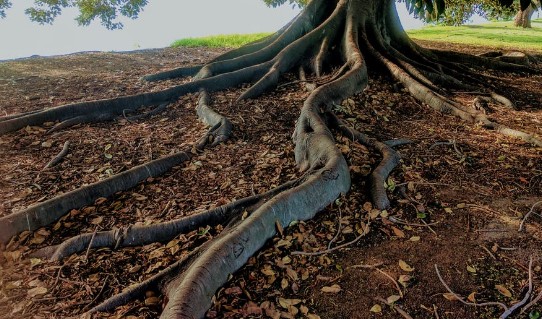


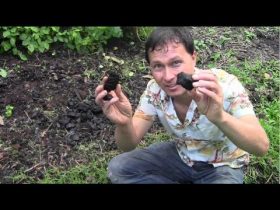
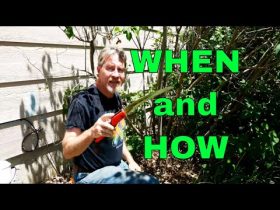



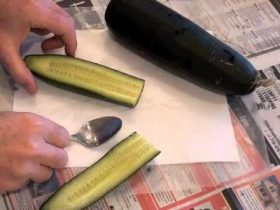

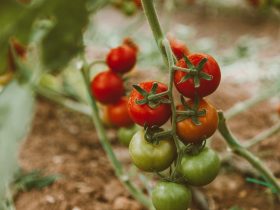
Leave a Reply